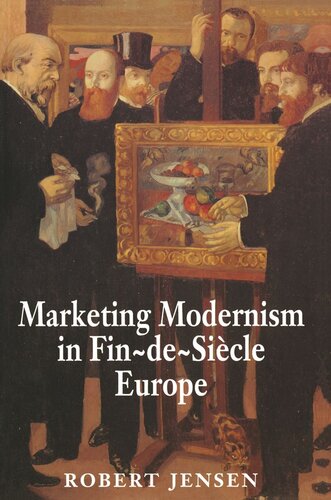

Most ebook files are in PDF format, so you can easily read them using various software such as Foxit Reader or directly on the Google Chrome browser.
Some ebook files are released by publishers in other formats such as .awz, .mobi, .epub, .fb2, etc. You may need to install specific software to read these formats on mobile/PC, such as Calibre.
Please read the tutorial at this link: https://ebookbell.com/faq
We offer FREE conversion to the popular formats you request; however, this may take some time. Therefore, right after payment, please email us, and we will try to provide the service as quickly as possible.
For some exceptional file formats or broken links (if any), please refrain from opening any disputes. Instead, email us first, and we will try to assist within a maximum of 6 hours.
EbookBell Team

4.3
88 reviewsIn this fundamental rethinking of the rise of modernism from its beginnings in the Impressionist movement, Robert Jensen reveals that market discourses were pervasive in the ideological defense of modernism from its very inception and that the avant-garde actually thrived on the commercial appeal of anti-commercialism at the turn of the century. The commercial success of modernism, he argues, depended greatly on possession of historical legitimacy. The very development of modern art was inseparable from the commercialism many of its proponents sought to transcend. Here Jensen explores the economic, aesthetic, institutional, and ideological factors that led to its dominance in the international art world by the early 1900s. He emphasizes the role of the emerging dealer/gallery market and of modernist art historiographies in evaluating modern art and legitimizing it through the formation of a canon of modernist masters.
In describing the canon-building of modern dealerships, Jensen considers the new "ideological dealer" and explores the commercial construction of artistic identity through such rhetorical concepts as temperament and "independent art" and through such institutional structures as the retrospective. His inquiries into the fate of the juste milieu, a group of dissidents who saw themselves as "true heirs" of Impressionism, and his look at a new form of art history emerging in Germany further expose a linear, dealer- oriented history of modernist art constructed by or through the modernists themselves.